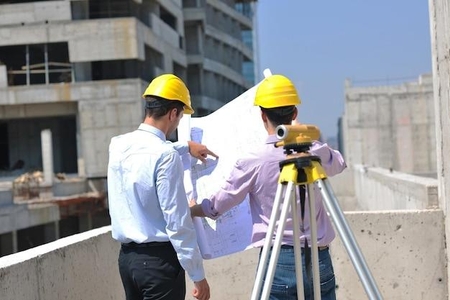
Table of Contents
ToggleIf you’re just stepping into the world of construction estimating, first off—welcome! You’re entering a field that combines precision, practicality, and big-picture thinking. Whether you’re estimating for electrical, mechanical, HVAC, plumbing, or general contracting work, one thing is clear: accurate commercial estimating services are the foundation of any successful project.
In this post, we’re going to walk you through what commercial estimating services are, how they help every trade in construction, and a beginner-friendly step-by-step guide to get started. We’ll also sprinkle in some practical tips to boost your confidence and accuracy.
Let’s dive in!
What Are Commercial Estimating Services?
In simple terms, commercial estimating services help contractors and construction professionals calculate the total cost of a project before it begins. This includes:
- Materials
- Labor
- Equipment
- Overhead
- Profit margins
These services are especially useful in commercial projects where the scale and complexity are much higher than residential work. Whether you’re bidding on an office building, retail space, warehouse, or school, accurate estimates help you win jobs without losing money.
The best part? Estimating services are available for all trades, including:
- Electrical
- Plumbing
- HVAC
- Mechanical
- Framing
- Drywall
- Concrete
- Roofing
- And more!
If you’re new to estimating, using a professional estimating service or learning to follow best practices can save you from underbidding (and losing money) or overbidding (and losing the job).
Step-by-Step Guide for Beginner Estimators
Whether you plan to do estimates yourself or work with a service provider, here’s a step-by-step guide to understanding how the process works:
Step 1: Review the Project Plans and Specs
Before anything else, study the project drawings and specifications carefully. This gives you an overview of what’s being built and what your trade is responsible for.
Pro Tip: If you’re unsure about reading blueprints, take a short online course or ask a mentor—this is a core skill for all estimators.
Step 2: Perform a Quantity Takeoff
This is where you count and measure all the items you need for the job—pipes, wires, ducts, fixtures, equipment, etc. This is often called a QTO (Quantity Takeoff).
Use estimating software or even a spreadsheet to record your numbers. Accuracy is everything here!
Step 3: Price Your Materials and Labor
Next, assign current prices to your materials and labor. Reach out to suppliers or use pricing databases. If you’re working in a specific trade, get labor rates based on your crew’s experience and speed.
Pro Tip: Prices change often. Update your cost database regularly or use estimating software that syncs with pricing tools like RSMeans or Trimble.
Step 4: Add Equipment, Overhead, and Markup
Include costs for equipment rentals, tools, and other indirect expenses (overhead). Then apply a markup for profit—usually a percentage based on your company’s goals.
Step 5: Review and Finalize the Estimate
Double-check your numbers, review the scope again, and make sure everything is included. If you’re submitting a bid, format it professionally with a clear scope of work and terms.
Bonus Tip: Always keep a checklist for your trade to make sure you didn’t miss any common items.
How Estimating Services Help All Trades
If all this feels a bit overwhelming, you’re not alone! That’s why commercial estimating services are in high demand. Here’s how they help professionals across all trades:
Electricians:
Estimators can count fixtures, outlets, panels, and calculate conduit and wire runs for you—saving hours of time.
Plumbers:
From underground piping to fixture counts and venting systems, estimating services help avoid costly errors and omissions.
HVAC Contractors:
Commercial HVAC systems are complex. Estimators can help size equipment, count diffusers, and include controls in the bid.
General Contractors:
Need to coordinate multiple trades? Estimating services can create a master budget and ensure each subtrade is accounted for.
No matter your trade, using a professional estimating service gives you more time to focus on the field, manage your crew, and win more jobs.
Practical Tips for New Estimators
To wrap this up, here are some hands-on tips to help you grow in your estimating journey:
Start Small
Don’t try to estimate a full shopping mall on your first try. Begin with a small commercial space or a single-trade portion of a larger project.
Use Technology
Tools like PlanSwift, Bluebeam, and STACK make digital takeoffs and estimates much easier. Try a few and see what fits your style.
Ask Questions
Talk to experienced estimators, project managers, or foremen. They can point out real-world issues that aren’t in the drawings.
Track Your Bids
Whether you win or lose a bid, track your numbers. This helps you learn what works and how to adjust your pricing in the future.
Learn from Mistakes
Every estimator misses something at some point. Don’t get discouraged—use it as a learning experience. Even the pros had to start somewhere.
Conclusion:
Commercial estimating services for all trades are a powerful resource—especially if you’re new and trying to learn the ropes. Whether you’re an electrician, plumber, HVAC tech, or general contractor, accurate estimates are the key to landing jobs, making a profit, and building a strong reputation.
As you grow your skills, remember this: every great builder once struggled with their first estimate. The important thing is to start, stay curious, and keep improving.
- Arts & Style (100)
- Automobile (287)
- Business (5,665)
- Business and Entrepreneurship (165)
- Career Development (55)
- Climate & Environment (26)
- Creative (34)
- Culture (1,554)
- Beauty (281)
- Skincare (242)
- Cultural Studies (75)
- Digital Life (73)
- Energy Healing (31)
- Fashion (1,035)
- Clothing (696)
- Fashion Design (234)
- Philosophy (7)
- Morality (6)
- Religion (17)
- Sports (116)
- Beauty (281)
- Digital Marketing (342)
- DIY and Crafts (15)
- Economics (8)
- Education (1,279)
- Entertainment (198)
- Faith & Spiritual (10)
- Fashion and Beauty (155)
- Finance and Money Management (210)
- Fitness and Exercise (32)
- Food and Drink (170)
- Game (140)
- Health and Wellness (1,094)
- Home and Garden (388)
- Law (142)
- Lifestyle (1,371)
- Health (680)
- Home (388)
- Architecture (99)
- Interior Design (216)
- Rental Property (27)
- Pets (75)
- Relationships (70)
- Restaurants (19)
- Literature (7)
- Media (272)
- Packaging (41)
- Politics (1)
- Real Estate (257)
- Science and Nature (14)
- SEO (137)
- Social Media Marketing (51)
- Software Development (221)
- Sports and Fitness (44)
- Technology (844)
- Artificial Intelligence (239)
- Blockchain (61)
- Data Science (114)
- Gadgets (144)
- Security (139)
- Transportation (108)
- Travel & Tourism (747)
- Uncategorized (1,948)
- World (62)
- International (59)

Commercial Estimating Services for All Trades

Architectural Firms in Indore – Excellence in Design & Planning

Container Hotel in Ahmedabad Trusted Choice for Modern Traveler

Commercial Construction Company in Warangal | Expert Project



